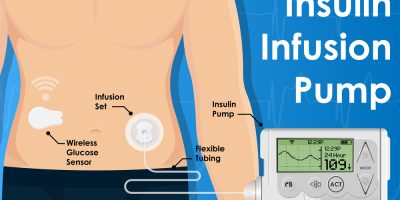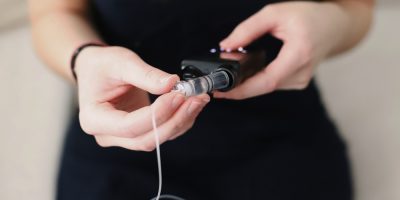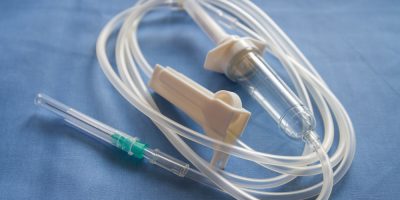- +91-8052038976
- drrishishukla@gmail.com
- SWAROOP NAGAR, KANPUR 208002
What is an Insulin Pump?
What is an Insulin Pump?
An insulin pump is a small, computerized device that delivers insulin continuously throughout the day. It attempts to mimic the normal pancreas’s release of insulin, but you must tell the pump how much insulin to inject. It delivers insulin in two ways: a basal rate which is a continuous, small trickle of insulin that keeps blood glucose stable between meals and overnight; and a bolus rate, which is a much higher rate of insulin taken before eating to cover the food you plan to eat. Since use of the pump is part of the diabetic management therapy it is nomenclated as Insulin Pump Therapy. In medical terms it is also known as CSII (Continuous Subcutaneous Insulin Infusion).
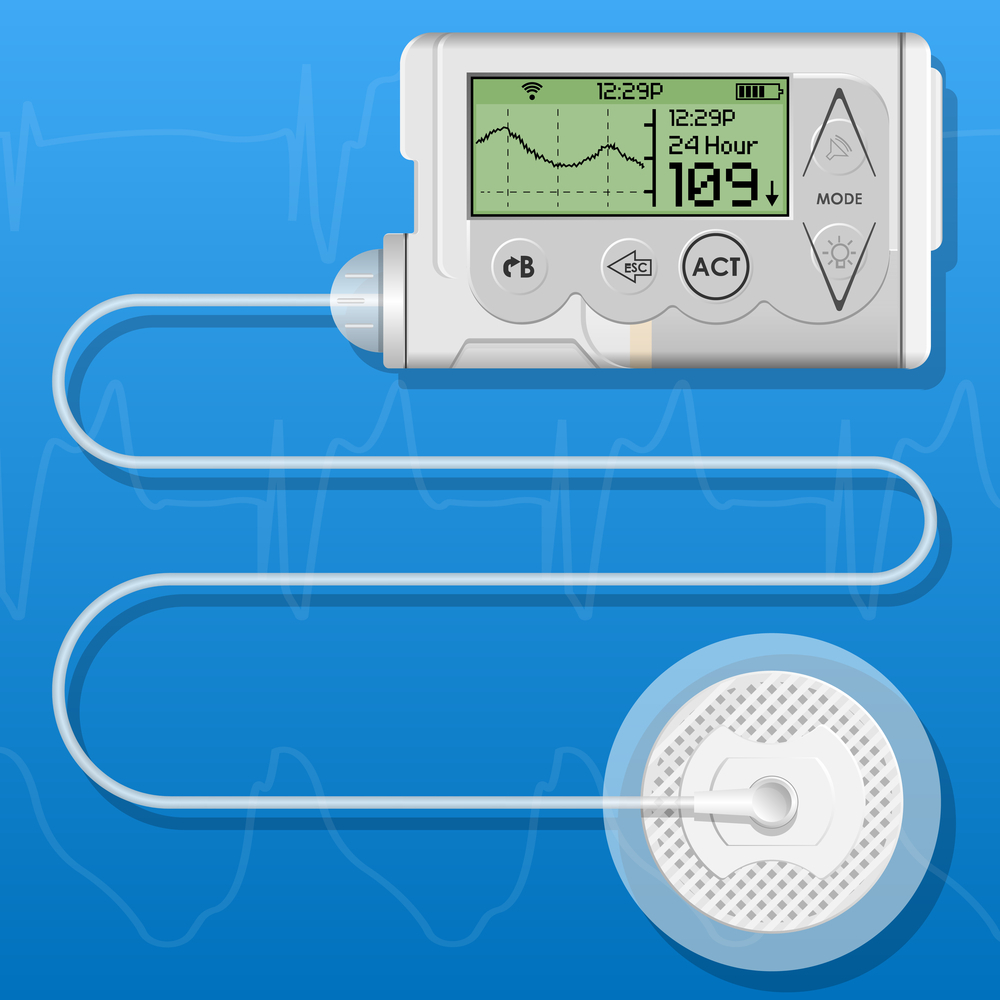
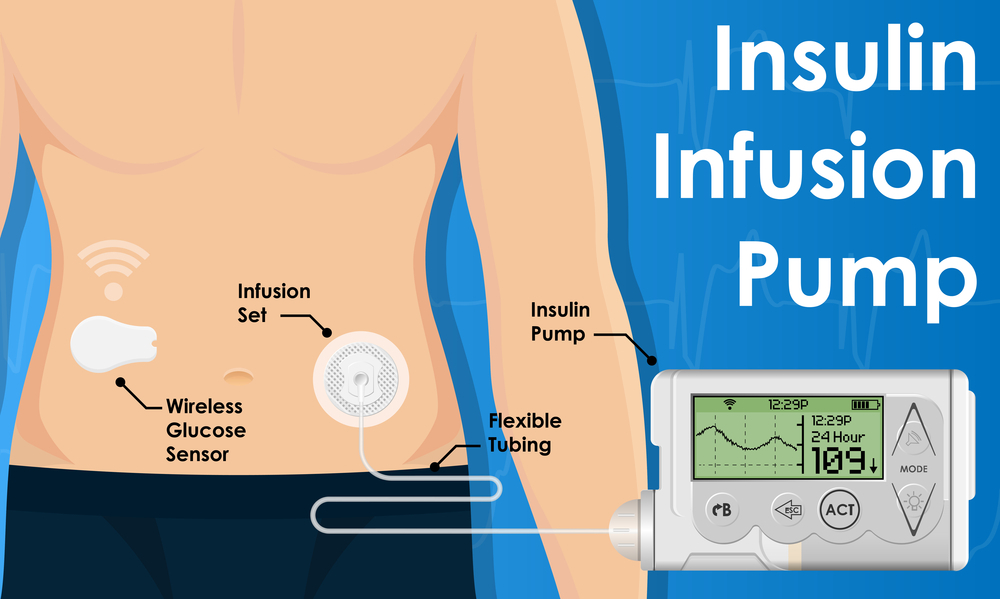
How Device releases Insulin?
Basal Form
In a steady measured and continuous dose insulin is released throughout the day. This can also be changed if needed.
Bolus Form
A strong dose of insulin is released on demand but as per your direction to match your food in-take or to control the high blood sugar level which might have increased instantaneously.
Insulin Pump Therapy and how it functions?
Technical developments in medical field are day by day bringing an ease in patient care management and in certain cases it has significantly empowered the patient himself for his own care. Diabetes management through Insulin Pump is the most recent advancement in the field and it has brought a lot of flexibility in day-to-day life of diabetic patients.
As explained above insulin pump is a small battery-operated electronic device that holds a reservoir of insulin. It is approximately 5.3 cm wide and 9.6 cm high. The pump delivers precise doses of rapid-acting insulin 24 hours a day. For better understanding we can say that insulin pump imitates the way a healthy pancreas functions by releasing a steady stream of insulin as needed by the body thus replacing the need for frequent injections.
The pump is programmed to deliver insulin into the body through thin plastic tube known as the infusion set or giving set. The pump is worn outside the body, in a pouch or on to your belt. The infusion set has a fine needle or flexible cannula that is inserted just below the skin where it stays in place for five days.
Only fast acting insulin is used in the pump. Whenever food is eaten the pump is programmed to deliver a surge of insulin into the body like the way the pancreas does in people who do not have diabetes. Research has shown that insulin pump therapy can reduce the frequency of severe hypoglycaemia as well as improve quality of life. Using a pump may also improve suboptimal blood glucose control.
An Insulin Pump has buttons to program your insulin and navigate through the menu, LCD colour screen to show what you are programming, Battery compartment to hold 1 AA alkaline battery and Reservoir compartment
An infusion set is a thin tube that goes from the reservoir to the infusion site on your body. It is placed into the same sites (areas) on your body where you would normally give your insulin injections. It is changed every 4 ~ 5 days.
A plastic cartridge that holds the insulin that is locked into the insulin pump. A reservoir can hold up to 300 units of insulin and is changed every two to three days, depending upon the need of the insulin.
Why Insulin Pump Therapy?
Insulin pump therapy is highly recommended for patients who are leading a comparatively busy life and they just do not need to worry about frequent fluctuations in the blood sugar levels of their body. A pump helps you keep your blood sugar with-in your target range. People who use a pump have fewer big swings in their blood sugar levels. Pump works well for people who can’t find an insulin dose that keeps blood sugar under control without also causing low blood sugar. Since insulin pump therapy can help you achieve better control, you can reduce long-term complications of diabetes such as eye, heart, kidney, and nerve damage. Insulin pump therapy provides more predictability in the way insulin works in your body.
Advantages of Insulin Pump Therapy
- Say No! To Syringe
- Reduces Random Blood Glucose Swings
- Gives Flexibility from Stubborn Eating Schedules
- Minimizes the Risk of Hypoglycaemia
- Matches with the life style of the person
Disadvantages of Insulin Pump Therapy
- Risk of infection if cannula is not changed properly
- Not a cheaper solution
- In some cases, patient feels little stressed due to attached pump
How Does Insulin Pump Works?
You will be given full training by an expert on how to use your new pump:
- Step 1: Setting up an insulin pump
- Step 2: Fill the reservoir
- Step 3: Attach the infusion set
- Step 4: Prime the pump
- Step 5: Insert the infusion set
- Step 6: Setting the basal rate of insulin
- Step 7: Delivering boluses
- Step 8: Changing infusion sites and refilling the pump
If you need urgent care, simply call our 24 hour emergency hotline.
Your personal case manager will ensure that you receive the best possible care.
Call Now
